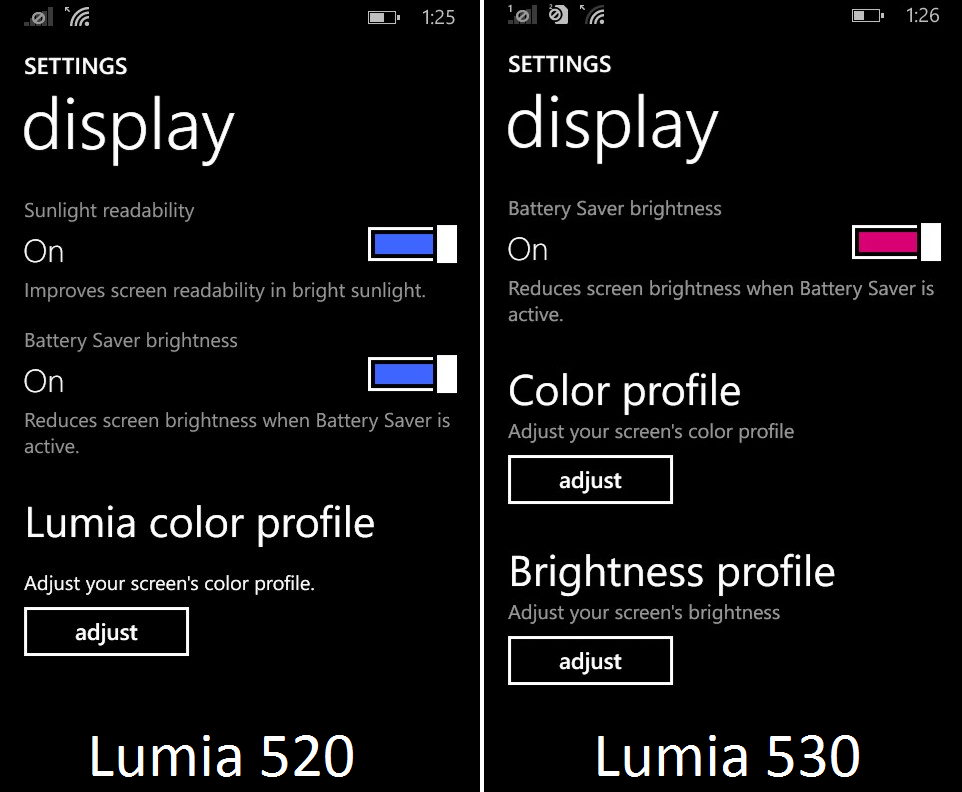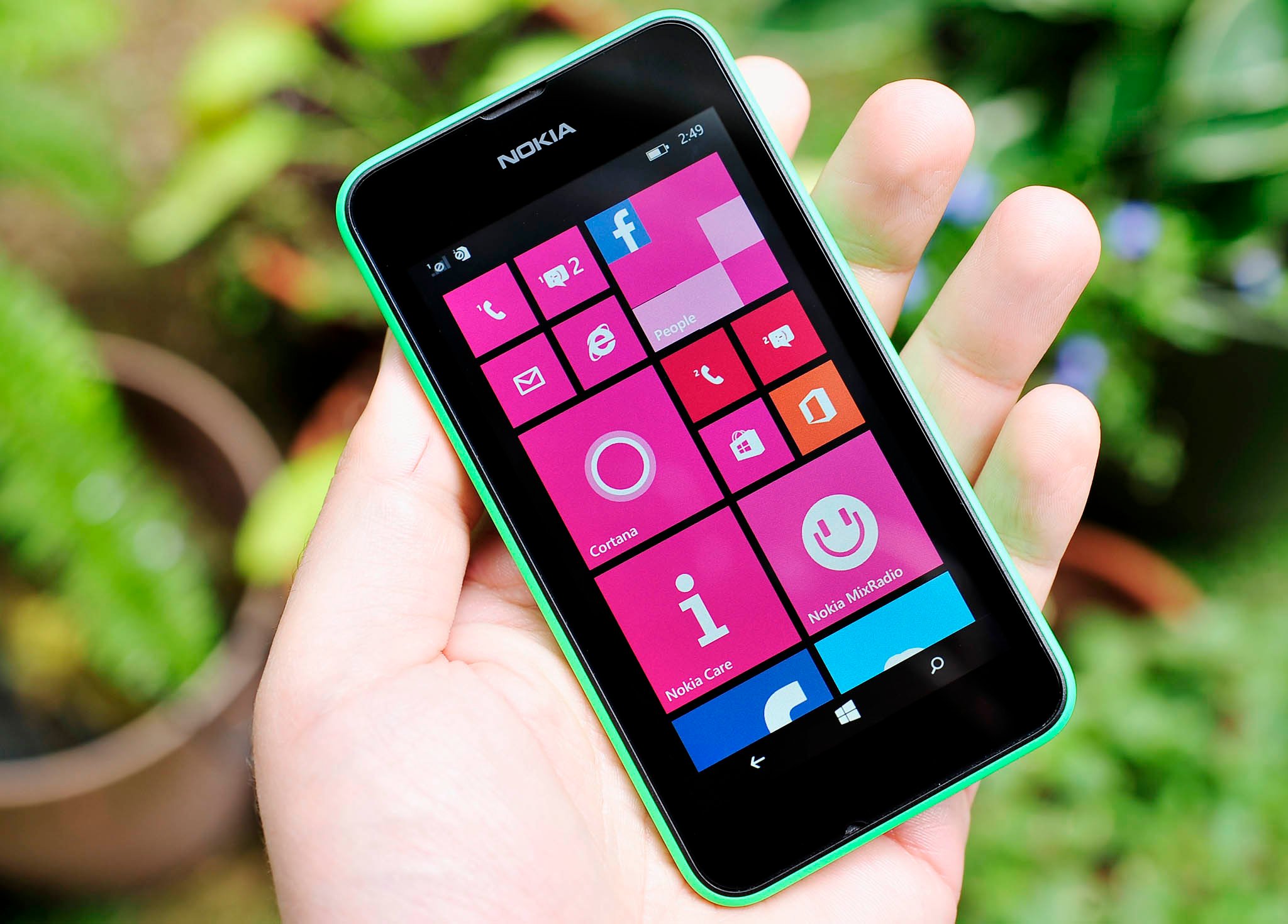Lumia 520 versus Lumia 530 benchmarks show who is king of low-cost Windows Phones

The Nokia Lumia 530 is the newest entry-level Windows Phone device to grace the markets in 2014. As the global rollout begins, we are diving deeper into seeing what the phone can do. Although technically speaking the Lumia 530 is a follow up to the Lumia 520, in some ways it is a step down in specs in an attempt to drive the price even lower. This difference is why many consider the Lumia 630 to be a better upgrade for current Lumia 520 owners.
How does the new Quad-core 1.2 GHz Snapdragon 200 chipset in the Lumia 530 compare to the older, Dual-core 1.0 GHz Snapdragon S4 found in the Lumia 520? Let's find out!
Setup
In this test, we used the free and cross-platform supported Basemark II OS software to compare device performance. Neither phone used a micro SD card, as the app was loaded into internal memory.
Both phones are running the latest software including Windows Phone 8.1 (build 12400 for the Lumia 530; build 12393 for the Lumia 520) and Lumia Cyan updates. Both phones were soft-reset prior to their tests.
We ran Basemark II OS multiple times for consistency.
Results
Overall, the marks from the Basemark II OS app reflects intuition that the Lumia 530 outperforms the Lumia 520 in virtually every way. The overall score for the Lumia 530 puts it at 366, while the Lumia 520 sits at a much lower 273.
The largest difference in the sub-tests is found in the System performance, which looks at raw processor power. As expected, a Quad-core 1.2 GHz CPU (Score 566) is much better than a Dual-core 1 GHz one (Score 284), making the results unsurprising. Likewise, for graphics the Lumia 530 scored 178 over the lower 125 found on the Lumia 520, suggesting that for games the Lumia 530 is a better device.
All the latest news, reviews, and guides for Windows and Xbox diehards.
Interestingly memory had the Lumia 520 slightly edging out the Lumia 530, suggesting that not all the system components found in the newer entry-level are necessarily better. However, because the Lumia 530 has a beefier CPU, it can overcome any other bottlenecks found on the chipset.
In real world tests the Lumia 530 owns
Benchmarks are one thing, but how the phone reacts to everyday tasks is another. Although more subjective, the Lumia 530 feels zippier for launching apps, loading graphics and scrolling around the OS, suggesting that the new chipset improves upon the experience in owning one of the cheapest Windows Phone 8.1 devices around.
In terms of loading games, the Lumia 530 crushes the Lumia 520. An example game used was the popular Subway Surfers, which took an astounding 20 to 30 seconds longer on the Lumia 520 to load when compared to the Lumia 530. Apparently, that Snapdragon 200 is doing more heavy lifting on Nokia's latest Windows Phone, significantly improving user experience. Even simple things like bringing up the app-chooser and attaching images to emails were faster on the Lumia 530 by a substantial margin.
In terms of the display, the Lumia 520 has much better contrast with the Lumia 530 looking washed out by comparison. However, whites looked more natural on the Lumia 530. The Lumia 520 also has automatic brightness adjustment and sunlight readability mode (super bright), whereas the Lumia 530 lacks both of these. In exchange, the Lumia 530 gains dual-SIM support, which strategically may be more important for emerging markets.
Unfortunately, the camera test from Basemark II OS could not be compared due to it not being able to complete on the Lumia 530. The Lumia 530 though does omit a physical camera button in addition to losing the autofocus, which is an important difference between it and the Lumia 520. Image quality from sample photos using the Nokia Camera app yielded similar results on both phones, with perhaps a slight edge to the Lumia 530 for color saturation and sharpness.
Conclusions
The newer Snapdragon 200 with a Quad-core 1.2 GHz CPU is a better choice for Windows Phone. Games load drastically faster and navigating apps and doing regular OS tasks is a better experience. Some of this comes at a price though, as the Lumia 530 gives up a brightness sensor, camera button, camera autofocus, but gains dual-SIM support and on-screen keys.
Still, in looking at the Lumia 530 on its own, it is a compelling device for the price-range and demographic it is targeting. The Lumia 530's raw performance combined with the latest Windows Phone 8.1 operating system make it an excellent choice for those on a budget.
For users with a Lumia 520, the natural upgrade path makes the Lumia 630 somewhat more appealing since it has a larger display (4.5-inch versus 4) with ClearBlack for dramatically better color saturation. The Lumia 630 also has an improved Adreno 305 GPU versus the Adreno 203 found in the Snapdragon 200 on the Lumia 530. As a result, gaming and graphics performance should be even better on the Lumia 630.
Next time, we take a closer look at benchmarks between the Lumia 530 and Lumia 630.


Daniel Rubino is the Editor-in-chief of Windows Central. He is also the head reviewer, podcast co-host, and analyst. He has been covering Microsoft since 2007 when this site was called WMExperts (and later Windows Phone Central). His interests include Windows, laptops, next-gen computing, and wearable tech. He has reviewed laptops for over 10 years and is particularly fond of 2-in-1 convertibles, Arm64 processors, new form factors, and thin-and-light PCs. Before all this tech stuff, he worked on a Ph.D. in linguistics, performed polysomnographs in NYC, and was a motion-picture operator for 17 years.




